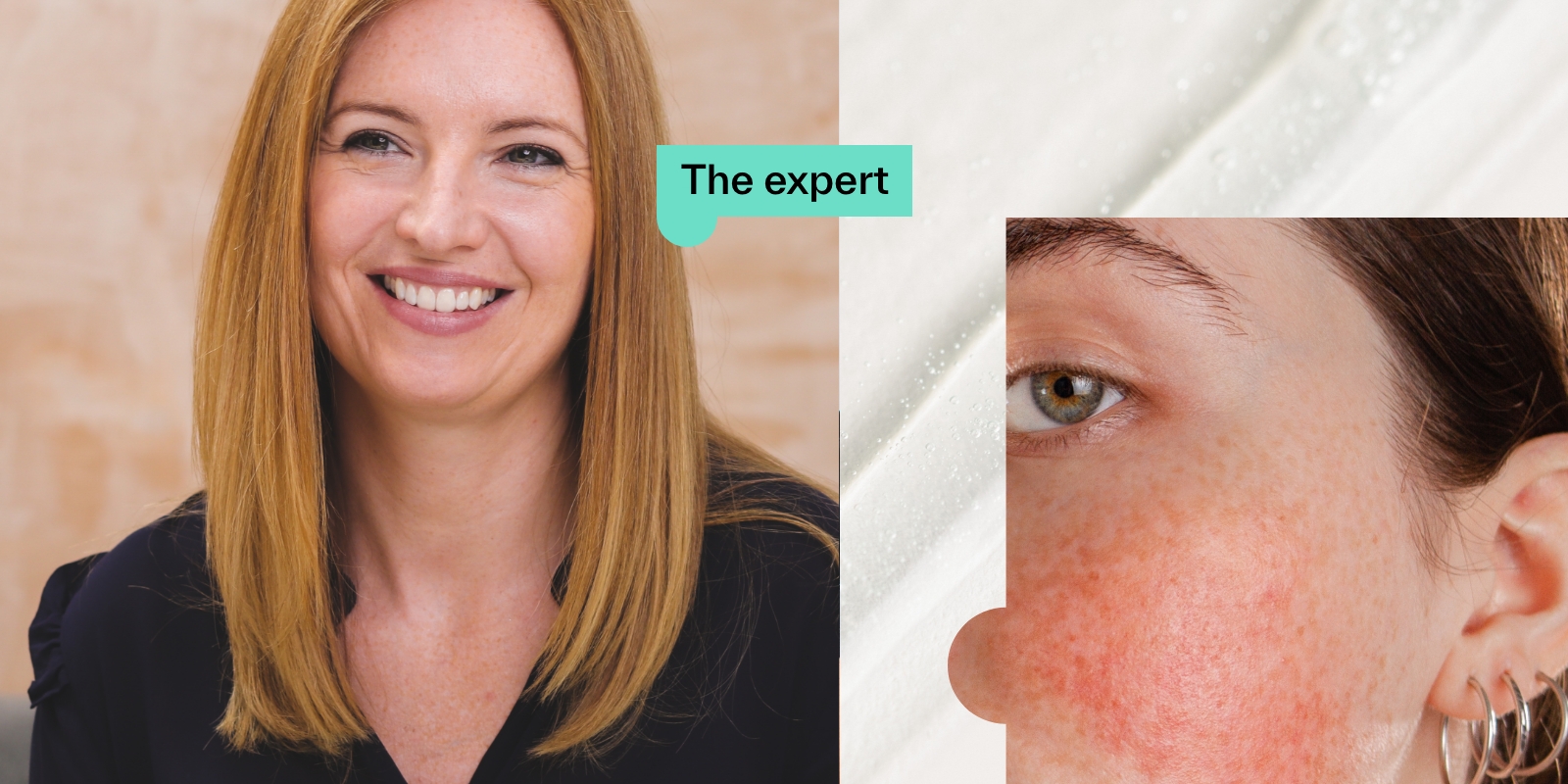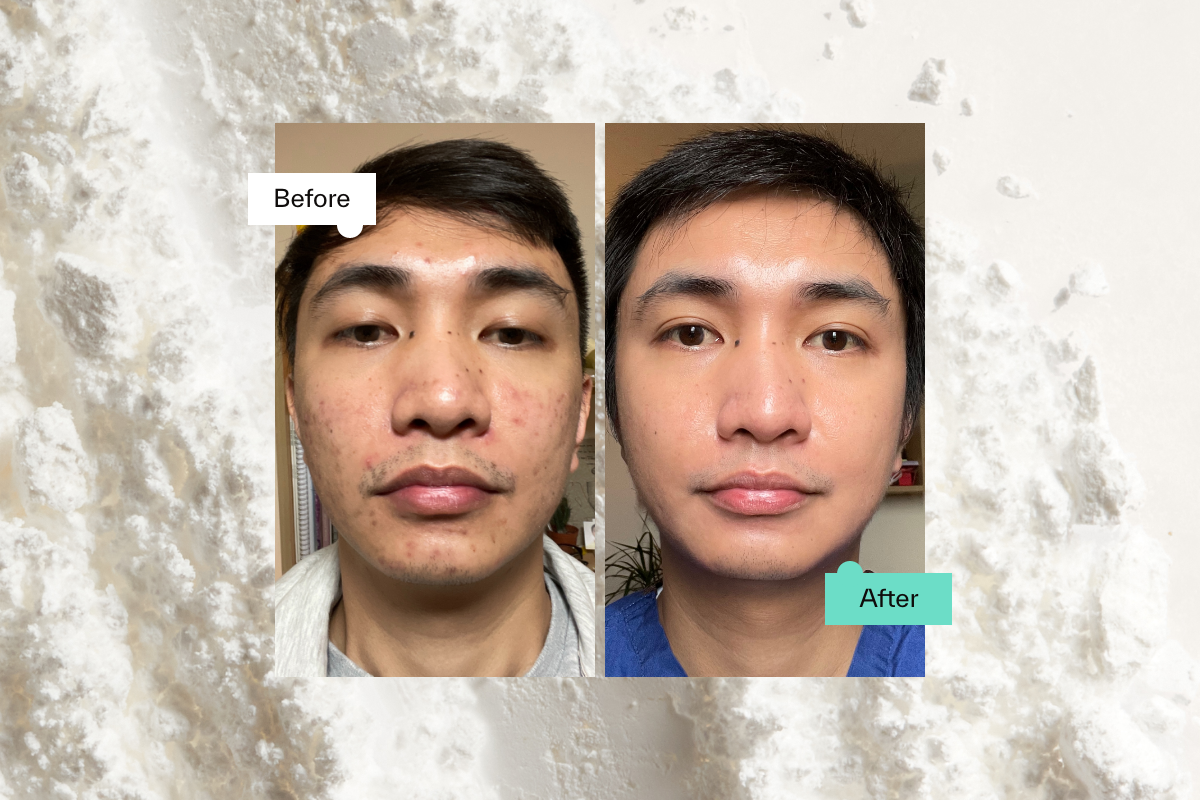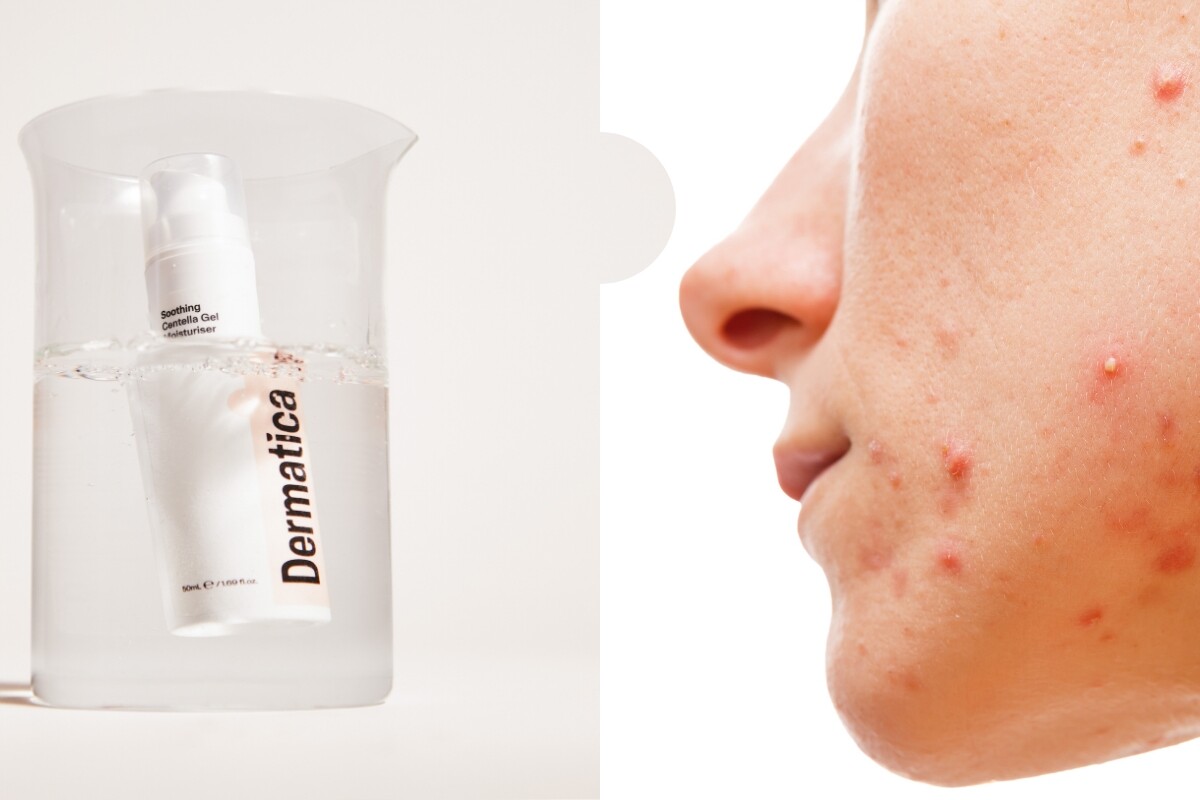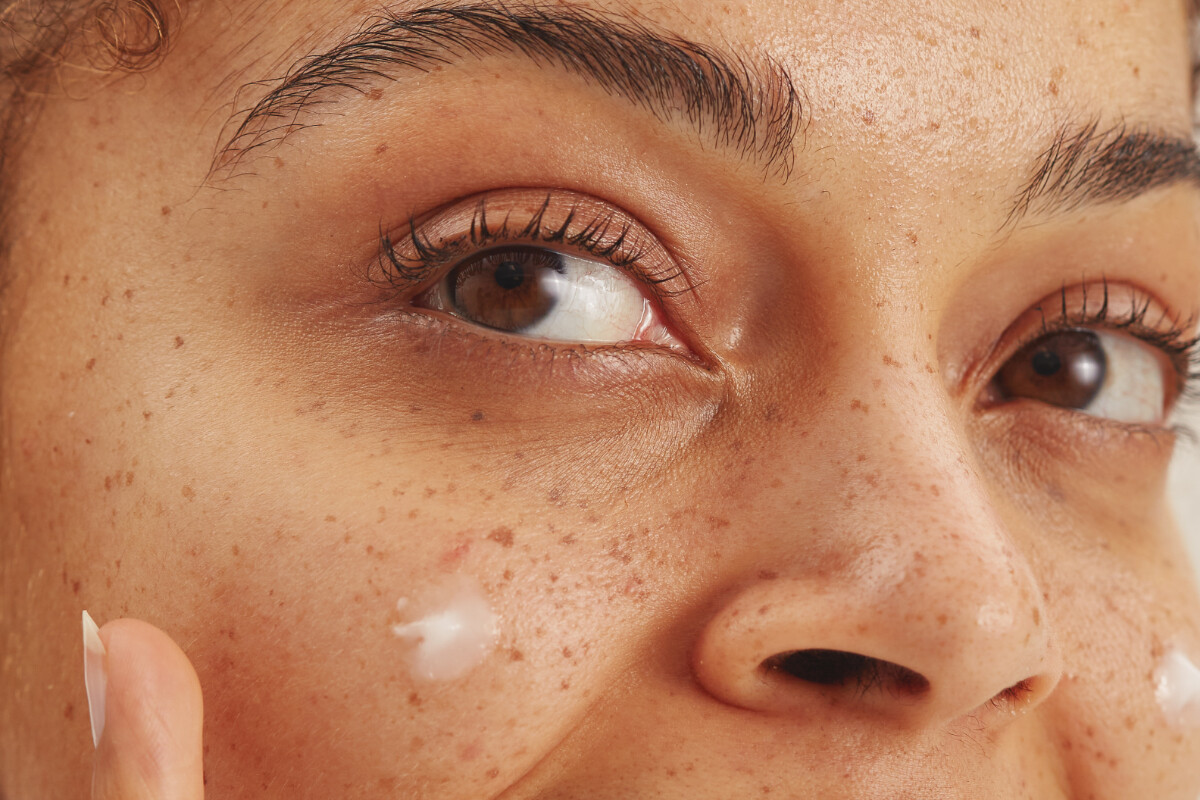If you’re wondering about potential side effects from your acne treatment, we can help. Our Clinical Lead, dermatologist Dr. Catriona Maybury, has everything you need to know.
Dr. Catriona says…
Acne appears when your hair follicles become blocked with cells and oil. This provides an environment for bacteria to multiply and inflammation to develop.
At Dermatica, we treat spots with two types of retinoids: adapalene and tretinoin. Retinoids work in several ways, but one of the key things they do is increase the rate of cell turnover, which means hair follicles are less likely to get clogged.
Increased cellular turnover is great for helping acne, but it can also cause side effects such as flaking, peeling or inflammation. If you are using a topical retinoid this is sometimes referred to as ‘retinisation’.
Retinisation side effects
Flaking
Peeling
Redness
Along with these side effects, one in five people notice a temporary flare-up of their acne after starting a topical retinoid. This is sometimes referred to as purging. Most retinoid side effects tend to peak at 2-4 weeks, before settling down.
Will I get retinoid side effects?
Your chances of experiencing side effects will depend on several factors, including your skin type. The most important is the strength and type of the retinoid you’re prescribed. For example, 60% of people will experience some side effects when using the strongest strength of tretinoin, compared to just 40% with adapalene. Here’s the full picture:
60% experience side effects with highest strength tretinoin
40% experience side effects with highest strength adapalene
20% experience side effects with weakest strength adapalene
So, what does this mean for you? If you’re finding your side effects difficult to manage, there are other treatment options for you. First, try out the steps below. If your skin still feels irritated, we can review your plan and switch you to a lower strength, or even recommend a different formula to help you reach your goals.
Manage side effects
If you have side effects from your custom formula, a few easy changes can help reduce irritation. Start by simplifying your routine. Avoid using anything else that could irritate your skin, such as active ingredients like glycolic or salicylic acid, or anything with a strong fragrance.
Avoid:
AHAs e.g. glycolic acid
BHAs e.g. salicylic acid
Heavily fragranced products
Try:
Using a thicker moisturiser
Applying your formula less often
Sticking to a gentle cleanser
If your skin is flaking or peeling
Try using a thicker moisturiser to nourish your skin barrier with extra hydration. It’s also fine to take a break from your formula for a few days until your skin feels better.
If your skin is inflamed
Apply your formula less often. Start with three times a week before increasing to alternate days. You can return to your usual daily application once your side effects have faded.
Need more advice? Our dermatology team is always here to help. If you have any queries about side effects, or the ingredients in your formulation, you can contact us via your dashboard at any time.
Dr Catriona Maybury
Dr Catriona Maybury is a Consultant Dermatologist, working as Medical Lead for Dermatica and at St George’s Hospital in London. Catriona completed her specialty training at St John’s Institute of Dermatology in London. Catriona has a special interest in medical dermatology, completing a PhD in liver fibrosis amongst psoriasis patients at King’s College London. Catriona is a certified coach and worked as Dermatology Section Editor for the British Medical Journal.





